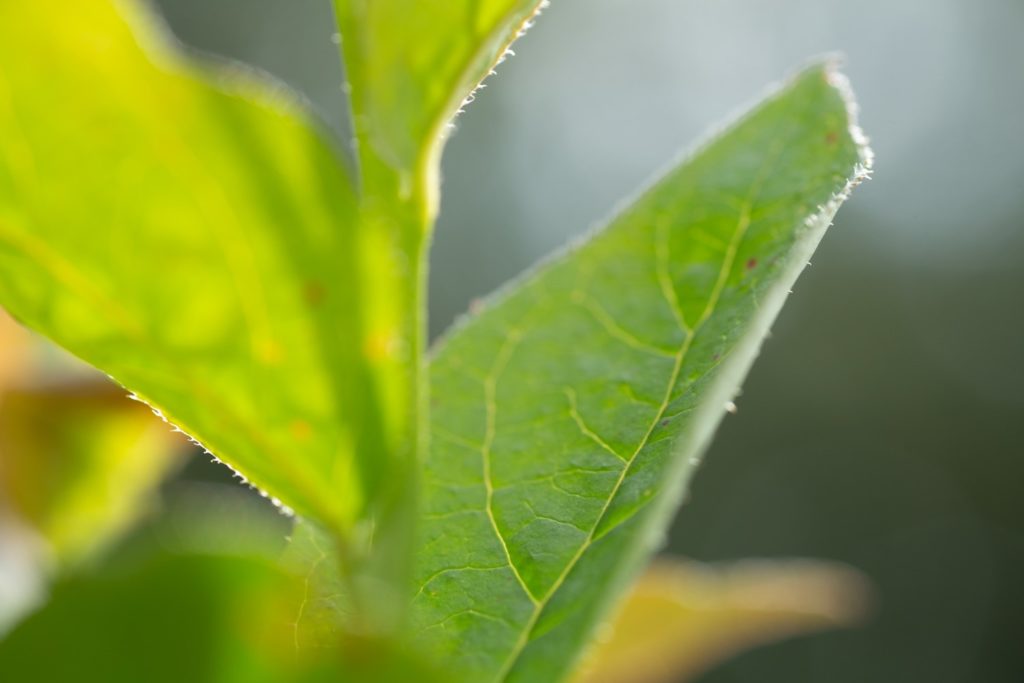The health of our crop is the most important subject for the growers at Fairplant. What is our main protection for the rootstocks? To make sure that our plants have the highest possible yields and quality we have a well thought of crop protection strategy. In the cultivation of rootstocks there are many different problems that can occur. Weeds, fungi, insects, nematodes, viruses and bacteria are always a threat to the plants.
Before we start planting our rootstocks we make sure to have a good soil, with no history of growing apples or pears. This is to prevent issues with soil fatigue, which will inhibit the growth of the plants. After the harvest of the 2-year old rootstocks we will never return to the same plot of land. Luckily we have plenty of healthy and suitable plots in the Noordoostpolder. Another benefit of the polder is that the weed pressure is much lower than on the “old land”. The polder has been reclaimed from the sea almost 80 years ago. Because the land is relatively young, there are much less seeds of weeds in the soil. Unfortunately this does not mean we do not have any weeds. So we have to protect.

To combat weeds in our nursery we have several methods. The most important one is done during cultivating the soil around the stoolbeds. This is done to keep the plants upright and stimulates rooting. But the additional benefit is that young weeds get covered with soil and wilt. When just cultivating the soil is not enough we need to correct with hand and also with a small dosis of herbicides, it’s all about protection of our rootstocks. Later in the season when the stoolbeds are packed with plants, weeds do not stand a chance to grow. In between the stoolbeds we sow grass, to prevent weeds from growing and give extra support to the soil when harvesting starts.
Protection against Fungi and insect starts with a good base. Fertilizers, crop enhancers and natural predators play a key role in protecting and combatting against these pests. But this alone is not enough to keep the plants healthy. Aphids, scab, mildew and nectria are some of the challenges we face. Especially with the Dutch weather these organisms can develop quickly. Spraying crop protection products is essential. Before every spray we make sure to use the best solution for the current situation. This can either be a product of green origin or a chemical solution. We always try to make the best choice for the moment, so we can reduce the number of sprays to a minimum.

Definitely the most devastating diseases we can encounter in our crops are viruses and bacteria. Most of these diseases are quarantine organisms. This means that when plants are infected they need to be destroyed, this is also the case for the stoolbeds. Viruses and bacteria need to be prevented at all costs. For viruses the most important part is to start with virus free planting material. The planting material for the stoolbeds comes from the official Dutch institute controlled by the NAK. These are all certified virus free plants. When the stoolbeds are planted, they are inspected each year by the NVWA a department of the Dutch authorities. When all the plants and processes are healthy they will receive the ELITE-certification.
A similar method is used for the bacterial disease Fire blight (Erwinia amylovora). Our nursery is located in a Fire Blight free zone. These zones are constantly monitored on infection with this extremely contagious pathogen. Infected plants are removed and destroyed immediately. Due to these measures fire blight doesn’t occur on our nursery. Because our plants are free of fire blight we can add the PZ-Erwiam label to our Elite certification.
With all these products, measurements and hard work we can harvest an excellent product each year. Which you can all see on the Elite PZ-Erwiam labels on our products.
